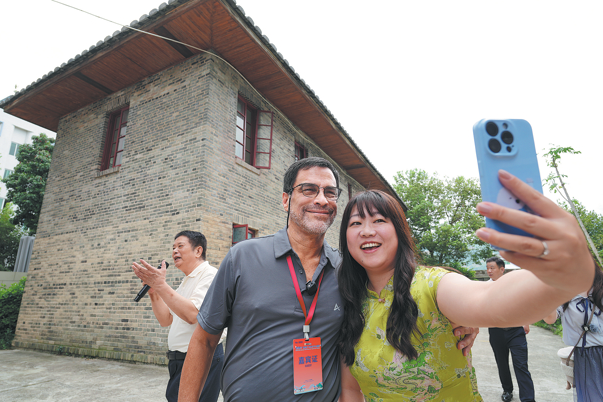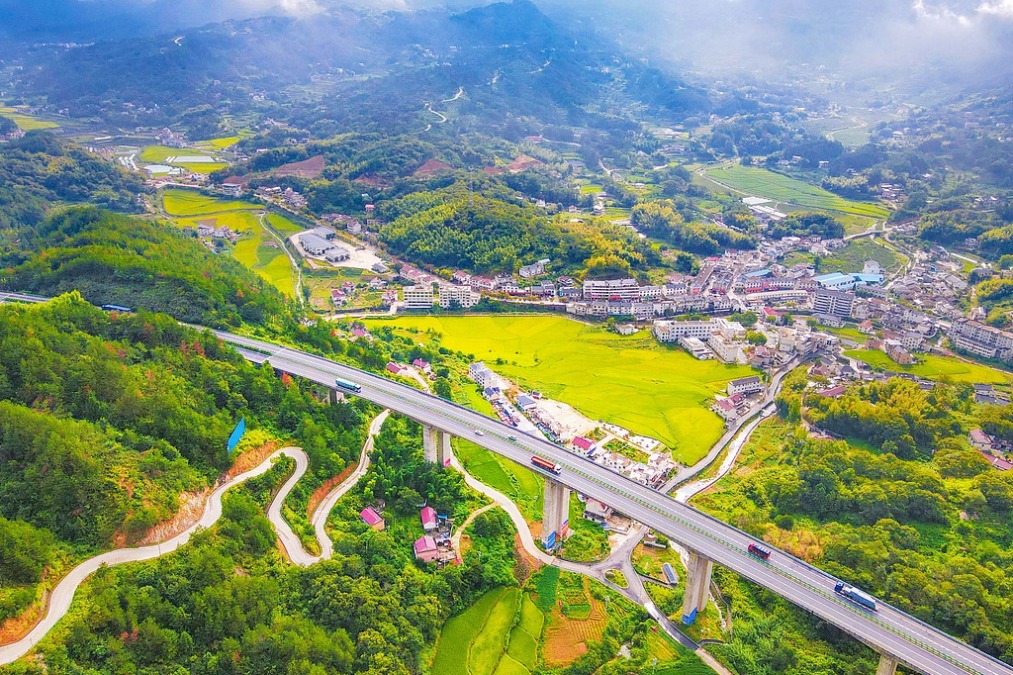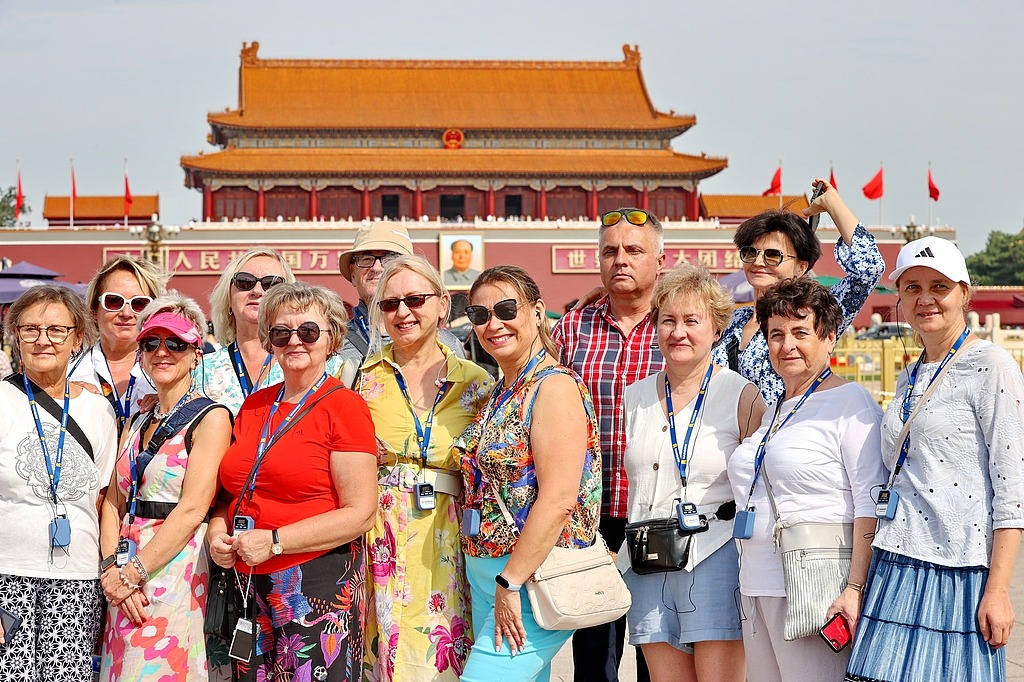What to expect from China's new round of opening-up?
By Vox South | chinadaily.com.cn | Updated: 2024-09-12 21:25

The recently held third plenary session of the 20th CPC Central Committee has riveted global attention and sparked widespread discussions. This is not surprising, as China has long been a stabilizer of the global economy and the most important engine for global growth. Some say no immediate reform measures or instant solutions were introduced at the plenary session, while others question whether China is moving toward self-isolation. Those who hold such viewpoints overlook the strategic depth and long-term vision of the decision adopted at the plenary session. Moreover, they apparently fail to understand the strategic nature of China's decision to open up and the enormous impact and benefits it has brought to both China and the world.
China's journey of opening-up over the past four decades and more can be roughly divided into three stages. Due to complex international and domestic reasons, China had been in relative isolation for decades before the adoption of the reform and opening-up policy, interacting with only a limited number of countries. In 1978, the country started to open up by initiating pilot programs. This stage of opening-up is often described as crossing the river by feeling the stones. The decision was based on a simple yet profound judgment: isolation leads to backwardness, and backwardness leaves a country vulnerable to bullying. China decided to establish special economic zones where special and flexible policies were implemented, and preferential measures were offered to foreign investments in some coastal areas on a pilot basis. This marked the beginning of the opening-up of the coastal regions that has gradually reshaped China's economic landscape.
In the early 1990s, China entered a new phase of all-round opening-up of all regions. The focus was to open up more regions and sectors to ensure better integration of the Chinese economy with the global economy. During this period, China gradually extended its opening-up policy across the entire country, and took additional steps to open up its industries. As an active player in the process of economic globalization, China joined the World Trade Organization in 2001, entering a period of accelerated opening-up. This was also when China experienced high-speed growth with an annual average rate of nearly 10 percent.
Since 2013, China has upgraded its all-round opening-up by putting more emphasis on proactive planning. The focus was to align with international norms and rules in the process of economic development and opening-up, thereby shifting to an opening-up strategy based on institutional innovation. One signature policy is the Belt and Road Initiative. In 2018, China put forward the concept of institutional opening-up. The third plenary session held recently also highlighted the need to advance high-level institutional opening-up to realize higher-standard and more thorough opening-up covering more sectors.
There is no doubt that China's transformation from a poverty-stricken country to the world's second-largest economy, from a country of seclusion to the largest trading nation, and from a big agrarian country to the world's factory are all attributed to continuous reform and opening-up. Chinese leaders have stressed on many occasions that the Chinese economy has become an integral part of the world economy and that China will not shut its door to the outside world but open itself even wider.
Through the three phases of opening-up, China has emerged as an important driver of global growth, and, in particular, that of the Global South, bringing tangible benefits to many Global South countries. During the first phase of opening-up, China's total import and export volume grew from $20.6 billion in 1978 to $135.7 billion in 1991, playing an increasingly prominent role in driving global growth. Its solidarity and cooperation with other Global South countries also became stronger. The second phase of opening-up made China the most important trading partner for over 100 Global South countries. The synchronized development of China and others of the Global South made global economic development more balanced and narrowed the North-South divide. During the third phase of opening-up, China's role in driving the growth of the Global South has become even more pronounced. China has been the world's second-largest consumer market and the second-largest import market for seven consecutive years. The Belt and Road Initiative alone has attracted nearly $1 trillion of investment. Over 3,000 projects in BRI countries have been carried out, creating 420,000 jobs.
China's opening-up to the world has not only transformed itself, but has also brought economic and social changes to many Global South countries. In recent years, China has become the predominant global destination for durian exports. The past seven years have seen Southeast Asia's durian exports to China surge 12-fold, which remarkably boosted the economy and increased people's incomes of the export countries. China's massive consumer market has also become an ideal destination for African coffee. In 2020, 1,500 kilograms of Rwanda coffee sold out instantly in a Chinese e-commerce livestream session, sparking a coffee export surge to China from across multiple African countries. Major China-built infrastructure projects such as the Mombasa-Nairobi Standard Gauge Railway, the Jakarta-Bandung High-Speed Railway and the China-Laos Railway connecting the Chinese city of Kunming with the Laotian capital Vientiane are hailed by local people as lifelines for development. Thanks to China's outbound investment, many Global South countries have built their first expressway, first cross-sea bridge, and first industrial park. China has become the "last opportunity" that must not be missed for many Global South countries in their pursuit of industrialization.
In the resolution adopted at the latest plenary session, China pledges to promote high-standard opening-up, including unilaterally opening its doors wider to the world's least developed countries and advancing both major signature projects and "small but beautiful" public welfare projects together with BRI partners. Amid intensified global geopolitical competition and rising de-globalization trend, we have every reason to expect that China's courageous steps and measures in opening-up to the world will provide even more valuable opportunities for Global South countries and inject fresh impetus into the joint cause of the Global South to build a better world.
























